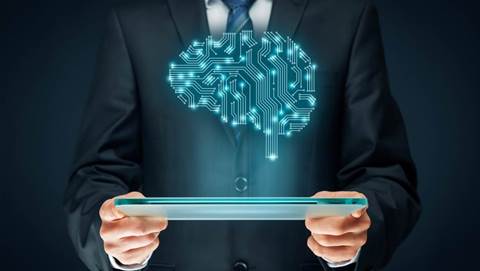2020 has been quite a year.
Hijacked by a global pandemic and exposed to major disruption, the world has experienced a lot of heartaches and even more uncertainty.
But as a result of all this chaos, there have also been leaps and bounds in innovation. Organisations in Asia Pacific and around the globe are accelerating their digital transformation initiatives at breakneck speeds in a bid to reset and survive. In Singapore, a 2020 PMG Singapore CEO Outlook study found that four in five business leaders are accelerating the digitisation of their operations during the pandemic.
For better or worse, we can all agree, this year will be memorable. As we enter 2021, here are my predictions for the technologies I expect will come to define the next normal:
Cloud’s reign continues
Even before the events of 2020, cloud had already established its value for many businesses by providing improved agility, scalability and cost efficiencies across industries. Personiv, a US-based business process outsourcing company, for instance, recognised that a cloud-based omnichannel contact centre and digital collaboration capabilities are crucial in enabling them to keep pace with the dynamic, fast-paced business landscape and offer superior experiences to their customers. The adoption of cloud-based collaboration tools and customer support platforms helped Personiv boost their productivity by 25% and reduce the cost of ownership by 60%.
This year, however, cloud technology is helping add a layer of resilience to many organisations by making the sudden shifts in working habits less disruptive. This has sealed cloud’s place as an essential piece of enterprise tech. In fact, IDC predicts that public cloud spending in Asia Pacific will reach US$34.5 billion in 2020, an almost 33% increase compared to 2019.
For 2021, I expect businesses to focus more on managing their cloud costs better, and looking to unify their different cloud environments.
In the face of increased competition due to greater prevalence of the cloud, cloud providers will need to focus on enhancing and integrating security, compliance, and privacy into their offerings.
Cloud will also grow in popularity as the ideal execution venue for new and emerging technologies such as artificial intelligence (AI), machine learning (ML), blockchain, and edge computing. Cloud will be integral to the digital transformation journey that many more businesses are now on.
Intelligent networks will change how we work
The COVID-19 pandemic is forcing businesses to innovate reactively and creatively in order to make work pattern shifts that they thought would take years to materialise, happen in mere weeks.
The results of this mass experiment have been eye-opening. Despite many preconceptions, remote working has largely been a success. A study conducted by Qualtrics revealed that one in three employees in Singapore feel more productive since they started working from home.
For companies, this new normal translates into new pressures as there will be an increasing need for networks to support hybrid architectures − be it cloud, on premises, or edge computing.
As a result, I predict more organisations will start seeking intelligent and intent-based networks that offer integrated security − such as SD-WAN for the WAN with SASE and Zero Trust security or virtual networks for multicloud − to deal with the heightened cybersecurity threat of their new perimeter-less ecosystem.
Similarly, the need to improve customer experience (CX) will accompany the increased digitisation of businesses. The ability to offer platform stability, ease of use and personalisation, while maintaining a human touch, will only grow in importance.
I also think we will see more onus placed on digital trust. Businesses capable of ensuring the safety of customers’ identity, data and transactions as well as employee data and transactions, will be rewarded with their loyalty.
IoT’s role in securing and analysing data
There has been a spike in the amount of data organisations have had to contend with this year, due to the increased digital transformation exercises taking place as well as higher online activity due to Covid-19 lockdowns.
In the coming years, 5G adoption will continue to accelerate across Asia Pacific. More 5G services are expected to launch across the region in 2021, with US$331 billion estimated to be invested in 5G deployments by 2025. Coupled with the growth in LP-WAN-based services, the volume of data created and handled by businesses is set to skyrocket.
So, to differentiate themselves from the competition, more companies will start to use secure data analytics technology to analyse and derive greater insights from their mostly unused operational data.
For instance, many COVID-19 restrictions are expected to be lifted by mid-2021, meaning hard-hit industries, such as travel, may start to see some growth again. However, the ability to offer enhanced experiences by using data better will likely still be a strong deciding factor for many customers.
So, in all of this, I expect IoT to play a pivotal role − helping to automate processes and make more information readily available to enterprises. And as IoT becomes increasingly intertwined with AI, and more deeply embedded in organisational structures and transformation programmes, devices will become increasingly ‘smart’ and capable of driving greater intelligence.
Automation becoming a business imperative
The pandemic has significantly increased investments in automated solutions this year, such as AI, ML and robotic process automation (RPA). Furthermore, it is predicted that there will be a 10% increase in advanced AI investment globally over the next two years, and Asia Pacific will be the fastest region to adopt this technology.
So, in the new year, I predict more businesses will become platform-driven digital businesses and use of these technologies will continue to rise. This will help them automate routine, repetitive and predictable tasks, and unlock tactical benefits.
These innovations will strengthen operational efficiency, increase the accuracy of platforms, and improve user experiences across ecosystems. They will also drive cost efficiencies and realignments, by helping businesses intelligently repurpose these savings in the right innovations.
Looking forward at what poses to be an increasingly uncertain future, expect businesses to continue to gravitate towards solutions that make them more resilient and agile.
Early adopters of cloud, IoT and automation were the firms that fared best in 2020. But even as we hopefully say goodbye to COVID-19 in the new year, one can only expect the benefits of digital transformation to continue growing.
Srinivasan CR is Chief Digital Officer at Tata Communications









